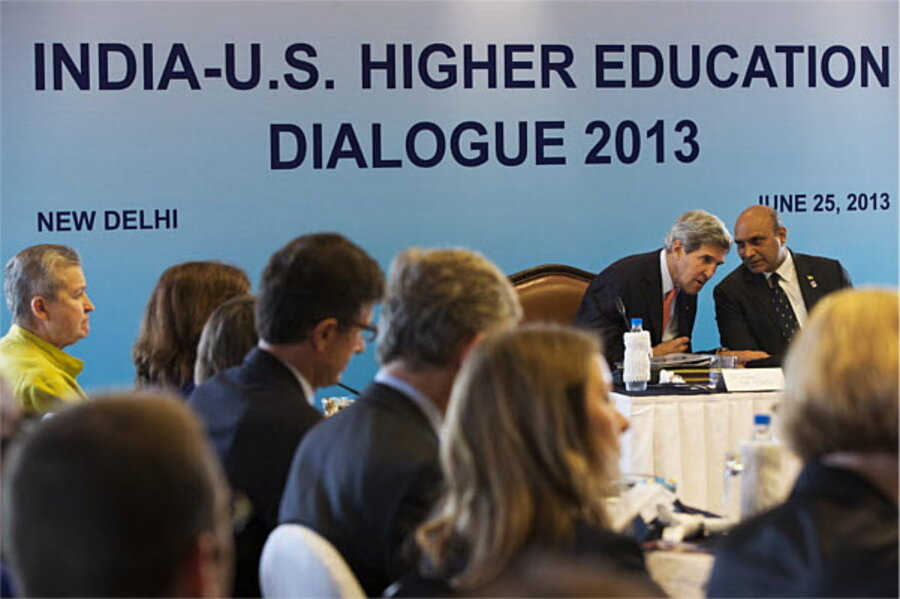Kerry pledges US help for India's massive higher ed needs
| New Delhi
On a visit to India, US Secretary of State John Kerry pushed today for greater bilateral cooperation on higher education, stating that his host's education system is facing "gigantic challenges."
With the world's advanced economies facing a graying workforce, India will head into the next decade with a median age of 29 and two-thirds of its people of working age. That's a huge potential boon for India – but only if those workers are educated. Currently, only 18 percent of its youth get any higher education.
Addressing the third round of the Singh-Obama Knowledge Initiative in Delhi, Secretary Kerry announced eight institutional partnerships and pledged to help with skill development of Indian youth. "We need to make sure that next generation of innovators and entrepreneurs have the skills and training," he said.
India had set itself a goal of building 1,000 universities and 50,000 colleges in this decade, something the Monitor devoted a cover story last year to exploring. Given the enormity of that task in a short time frame, the country is also looking for quicker, less traditional means of spreading post-secondary education including online education and community colleges. For the latter, India is looking to the US as a model, with plans of establishing 200 large American-style community colleges.
"The quality of higher education in India is a matter of concern and cooperation with the United States can help with that. We seek to increase our higher education enrollment ratio to 30 percent by 2020 and skill development will be a key part of it," says Ashok Thakur, secretary of higher education in the Indian government.
Indian Prime Minister Manmohan Singh and President Obama had announced their joint Initiative in November 2009, pledging $5 million each for higher education cooperation through projects that will work on educational reform, foster economic growth, generate shared knowledge to address global challenges, and develop junior faculty at Indian and American institutions of higher learning.
The eight memoranda of understanding signed between the two countries today included the Harvard-India Nutrition Initiative between Harvard School of Public Health and St. John's Research Institute, Bangalore; between Aligarh Muslim University and Ohio State University, and between Assam Agricultural University and Washington State University.
Next month, new Indian rules will go into effect that open the door to US universities opening campuses in India. The offer is only open to the most prestigious nonprofit institutions, which will diminish the impact of the ruling.
In the area of online education, India is laying a high-bandwidth network of fiber optic cables between the nation's top universities. Officials here are looking to the US for ideas on how to deliver high-quality lessons online. A memorandum of understanding signed today between the Indian Institute of Technology, Mumbai and the Massachusetts Institute of Technology will bring to India the edX online course platform founded by MIT along with Harvard University. edX offers free university-level courses worldwide.
The United States is also encouraging its students to study in India's elite educational institutions. There are currently 5,000 American students in Indian Universities, and the number is expected to triple in the next five years. Yet that number is a fraction of those heading to more mature and internationally recognized institutions in Europe.
"Ultimately India has to focus on institution building and giving its students the best teachers," says Prof. Yash Pal, who chaired a 2009 commission that advised structural changes in India's higher education system. "There's only so much that outsiders can help."






